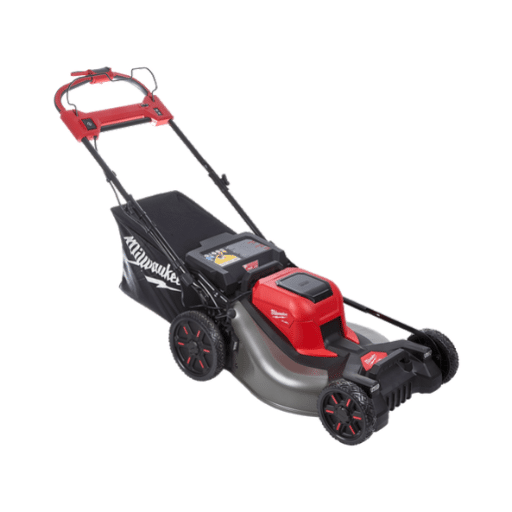Among the many practices of textile art, machine embroidery appeals as one of the rich mediums that employs technology and artistry. In this blog, we are going to discuss the interesting subject of machine embroidery fonts which will allow you to improve the quality of your design projects. Different styles and types of fonts available in the market will be examined in the article, including recommendations on how to choose the appropriate one for a specific task. Other than that, we will also deal with useful tools and techniques that could improve your embroidery projects in which every piece made will be perfect. It does not matter if you are an expert in stitching or a beginner, this article will help you understand the interesting world of machine embroidery fonts and aid you in creating beautiful unique art pieces.
What are the Different Types of Embroidery Fonts?

Embroidery fonts can suit a variety of embroidery designs because there are many different styles available, each with its own special features. The variations include block fonts, script fonts and specialty fonts. Firstly, block fonts are bold and easily readable thereby making it easy to expand legible text areas on different kinds of materials. Monograms and basic designs often make use of these. In contrast, handiwork font aims to imitate the flair of cursive writing, which adds an elegant touch to your embroidery work. If a project is made that aims at having personal or formal use, these are perfect for such uses. Lastly, styles that range from themed to decorative are chunked into specialty fonts since they create an opportunity for one to put different creativity into their work.
Understanding Script Fonts for Embroidery
When I choose script fonts for embroidery, I look for styles that add elegance and sophistication to my work. These fonts mimic cursive handwriting, offering a personal and formal touch. I make sure to consider the fabric’s texture to ensure the stitching stands out beautifully. I also pay attention to the font size, as smaller script fonts can sometimes lose clarity. By balancing these factors, I achieve a graceful and polished finish in my embroidery projects.
Exploring Serif and Sans Serif Fonts in Machine Embroidery
When exploring serif and sans serif fonts in machine embroidery, I focus on their unique characteristics. Serif fonts are traditional and feature small lines attached to the ends of the letters, adding a classic touch to my designs. They work well in projects that need a formal look. Conversely, sans serif fonts are clean and modern, without these ornamental lines. They’re ideal for contemporary designs and ensure high readability. I consider the project’s theme and the fabric’s properties to select the right style. By doing so, I achieve clear and visually pleasing embroidery results that align with my design goals.
How to Choose the Right Monogram Fonts
When choosing the right monogram fonts, I start by considering the style and occasion of my project. Look for fonts that balance elegance and legibility, especially for intricate designs. Personal preference plays a role, as does paying attention to font size—larger fonts can highlight detail. Also, assessing the fabric type helps ensure that the font complements the material, leading to a cleaner and more refined appearance.
How to Digitize Your Embroidery Designs?

Digitizing your embroidery designs is a crucial step that transforms your concepts into machine-readable files. First, start by selecting an embroidery software that suits your needs, offering features for editing and converting designs. Upload your selected artwork to the software, then outline the design areas that will be embroidered, specifying stitch types and directions. It’s essential to adjust the density and stitch angles to accommodate the fabric type you’ll be using, ensuring the design is executed smoothly. After finalizing these adjustments, simulate the design on the software to preview the outcome and make necessary tweaks. Save the file in a compatible format for your embroidery machine. Practicing patience and testing your digitized designs on sample fabric can enhance the final product, achieving professional and polished embroidery results.
Steps to Convert Fonts into Machine Embroidery Designs
In order to create the so called embroidery design from the fonts, the first step is to select a simple and clean font that would comply with the requirement of the project. For this, Lets say, I would use Wilcom or even Hatch, I bring in the font into the software and begin to digitize it by applying stitch types and directions as well as ensuring that the appropriate scale is made for the fabric. Next, I verify the stitch density which is usually 3-5 stitches per millimeter depending on the fabric. Next, I check the original image of the design drawn on the software and make any adjustments as necessary to eliminate distortions. I then proceed to save in a format such as PES or DST which allows me to upload on an embroidery machine for sewing.
Using Embrilliance Software for Digitization
Embrilliance software simplifies the digitization process with its user-friendly interface. Start by importing your design or font into the program. Use the software’s tools to digitize by selecting appropriate stitch types like satin or fill, and adjust the stitch direction to enhance design flow. Maintain a stitch density of 3-5 stitches per millimeter, varying slightly with your fabric type to ensure optimal fabric handling and quality. Test the design virtually in Embrilliance to tweak settings, reduce distortions, and maximize precision. Save your finalized design in a machine-compatible format like PES or DST, ready for embroidery. This streamlined approach ensures efficient and accurate digitization, allowing for creativity while maintaining technical precision.
Understanding Different File Formats: PES, DST, JEF, and More
When dealing with machine embroidery, understanding file formats like PES, DST, and JEF is crucial. Each format is compatible with specific embroidery machine brands. PES files work with Brother and Babylock machines, while DST files suit Tajima models. JEF files are for Janome machines. These formats contain stitch data and instructions for the machine. Ensure your file includes accurate stitch types, density, and direction. Keep stitch density between 3-5 stitches per millimeter for clarity. Adjust according to fabric type to prevent distortion. Save your designs in the correct format to ensure seamless embroidery execution.
What are the Best Practices for Machine Embroidery?

Some guidelines of machine embroidery include A good fit. The fabric and stabilizer are adequate to handle the design, reasonably flexible and tough enough, but would not cause deformity. The fabric has to be Stretched over the frame in order not to move. In addition, the respective types of threads and needles should be compatible to these as they also have a bearing on the final result. When you have finished with your artwork design ensure that the pattern is centered on the border of the hoop by positioning it upright to ensure there is an even weight on both sides. Also make sure that each thread has enough force applied pulling it downward and try to not allow the threads to become slack or break.
Tips for Selecting the Best Stitch Fonts
In terms of the stitch fonts, my emphasis is generally on the legibility aspect and the style of the font.For intricate designs I only keep the fonts basic for ease of understanding and comprehension. My main goal is to make sure the font is legible and clear even in different sizes. It is also important to consider the font texture and the fabric since some fonts go hand in hand with the smoothness or roughness of materials. Stitching fonts on a sample is great to ensure they will look beautiful when stitched and I select simple fonts that will enhance the design instead of dominating it.
Maximizing Quality with Applique and Bean Stitch Techniques
When maximizing quality with applique and bean stitch techniques, I start by selecting the right fabrics and threads to ensure durability and vibrancy. I carefully position the applique pieces and secure them properly to prevent shifting during stitching. For bean stitching, I adjust the stitch length for the proper density, which enhances both texture and durability. I use a stabilizer that matches my fabric’s weight to prevent wrinkling. Frequent assessments during the stitching process help me maintain precision and quality. By focusing on these factors, I ensure each embroidered piece is both beautiful and enduring.
Where to Find and Download Embroidery Fonts?

If you’re looking for particular embroidery fonts, Etsy and Creative Fabrics are just a couple of the sites that let you download some of the fonts they have. In most cases, such sites have a rationality of sorts because they bear descriptions and reviews of users. Furthermore, Embrilliance and Hatch are embroidery software applications that also have a font library as well as some additional font packs that can be bought. There are also websites which provide Google Fonts which are free of charge but ensure that these styles are compatible with your embroidery machine before downloading them. Always verify that the format is suitable with your embroidery machine before downloading and using those fonts.
Exploring Instant Download Options for Various Formats
When exploring instant download options for various formats, I prioritize speed and reliability. Etsy, for example, offers a seamless process. Once I purchase a font, I receive the download link immediately, allowing for quick access. Creative Fabrica stands out with its vast library and user-friendly interface, ensuring I can find compatible formats swiftly. With EmbroideryDesigns.com, I benefit from their well-organized categories and format filters, enabling me to pinpoint exactly what I need without delay. These top websites help streamline my embroidery projects, letting me focus more on creativity and less on logistics.
How to Customize Your Embroidery Alphabet?

Altering an embroidery alphabet requires knowledge of your machine as well as some software. First, identify the embroidery software that will work with your machine and contains alphabet tools. Programs like Embrilliance Essentials or Hatch Embroidery are good for such things. After that, proceed to modify the software modules by changing the size, font type, and the various stitches for your layout. Play around with the different thread colors and stitches until you get the look you want. When satisfied with the changes, save the embroidery design in an appropriate format and import it to the machine. Always test the output on a scrap piece of fabric before putting it on the final product.
Creating Unique Alphabet Letters with BX Formats
To create unique alphabet letters using BX formats, begin by selecting BX-compatible embroidery software, like Embrilliance Essentials. Load your desired BX font into the software. Adjust parameters like font size, stitch density, and spacing to fit your design needs. Choose thread colors that enhance your letters. Save your design in the appropriate format and transfer it to your embroidery machine. Ensure the settings match your fabric type and stabilizer. Conduct a test stitch on similar fabric to verify the result before proceeding with your main project. Keep stitch counts and density within limits to prevent thread breaks and ensure smooth embroidery.
Using Native BX Fonts for Personalized Designs
Using native BX fonts for personalized designs can significantly enhance your embroidery projects by allowing for easy customization and precision. To start, choose BX fonts compatible with your embroidery software like Embrilliance Essentials. According to leading resources, ensure your BX font library is diverse to match various design requirements. When utilizing these fonts, maintain a font size between 10mm to 25mm for clarity and detail. Adjust stitch density around 0.4 to 0.5mm for optimal quality without making the fabric too stiff, and ensure the needle choice is appropriate—typically a size 75/11 embroidery needle. Use stabilizer types that match the fabric’s weight and stretch, like cut-away stabilizer for knits. Importantly, preview your design using the software’s simulator to check alignment and spacing before commencing your project. Test on a swatch of the final fabric to tweak any settings before final execution. This approach ensures a perfectly tailored design with professional results.
Applying Cursive and Uppercase Styles Effectively
To apply cursive and uppercase styles effectively, I start by choosing fonts that complement my design and ensure readability. First, I test the cursive style on my fabric to see how it looks and adjust the spacing if needed. For uppercase letters, I keep them bold and prominent, making sure they stand out without overpowering the rest of the design. I balance the stitch density to enhance the appearance and prevent puckering. Using my embroidery software’s preview feature, I check the alignment and make necessary tweaks. By testing on a fabric scrap first, I can confidently apply these styles to my main project, achieving polished, professional results.
References
-
12 Best Fonts For Embroidery – A curated selection of fonts ideal for embroidery, featuring styles like Stitched and Cross Stitch Cursive.
-
Detailed Guide To Machine Embroidery Fonts – An in-depth guide covering various types of machine embroidery fonts, including ESA and BX.
-
Detailed Guide to Machine Embroidery Fonts on HackMD – A comprehensive overview of machine embroidery fonts, discussing TrueType and OpenType fonts.
Frequently Asked Questions (FAQ)
Q: What is the best machine embroidery font for monogramming?
A: The best machine embroidery font for monogramming often depends on personal preference, but popular choices include the monogram machine embroidery font, which typically offers elegant and classic designs suitable for initials or names.
Q: How can I use a script machine embroidery font in my designs?
A: A script machine embroidery font can add a stylish and cursive touch to your designs. These fonts are ideal for creating personalized items with a handwriting effect, perfect for names or decorative text.
Q: What formats are available for machine embroidery font downloads?
A: Machine embroidery fonts can be downloaded in multiple formats to ensure compatibility with different embroidery machines. Common formats include bx embroidery font, exp, hus, vp3, and xxx, allowing for flexibility in design use.
Q: How do I incorporate a chain stitch font into my embroidery projects?
A: A chain stitch font can be incorporated into embroidery projects by selecting designs that employ this stitch type. Chain stitch fonts are great for creating textured and vintage-inspired looks in your projects.
Q: What sizes are typically available for embroidery font designs?
A: Embroidery font designs usually come in various sizes to accommodate different project needs. Common sizes include 1.5, 2.5, and 3 sizes, to ensure versatility in design applications.
Q: Are there specific fonts for lowercase and uppercase alphabet embroidery?
A: Yes, many embroidery font designs include options for both lowercase and uppercase alphabet letters, allowing for a full range of customization in your embroidery projects.
Q: What is a fishtail font, and how is it used in embroidery?
A: A fishtail font is a type of script embroidery font characterized by its tail-like extensions on certain letters, adding a whimsical and decorative element to embroidery designs. It’s often used for playful and creative text applications.
Q: How do I download embroidery fonts in 9 formats?
A: To download embroidery fonts in 9 formats, you typically need to purchase or access a design package from a reputable provider. These packages will include the fonts in various machine formats such as bx, exp, hus, vp3, and xxx, ensuring compatibility with your specific embroidery machine.
Q: Can I create applique designs with embroidery fonts?
A: Yes, many embroidery fonts are designed to be used in applique designs. These fonts allow you to create layered, fabric-based text or shapes that stand out from the background fabric, offering a unique and tactile finish to your projects.
Q: What is satin stitch, and how is it used in embroidery font designs?
A: Satin stitch is a series of closely spaced zigzag stitches used to cover a section of fabric completely. In embroidery font designs, satin stitch is commonly used to create smooth, shiny lettering, giving the text a polished and professional appearance.









